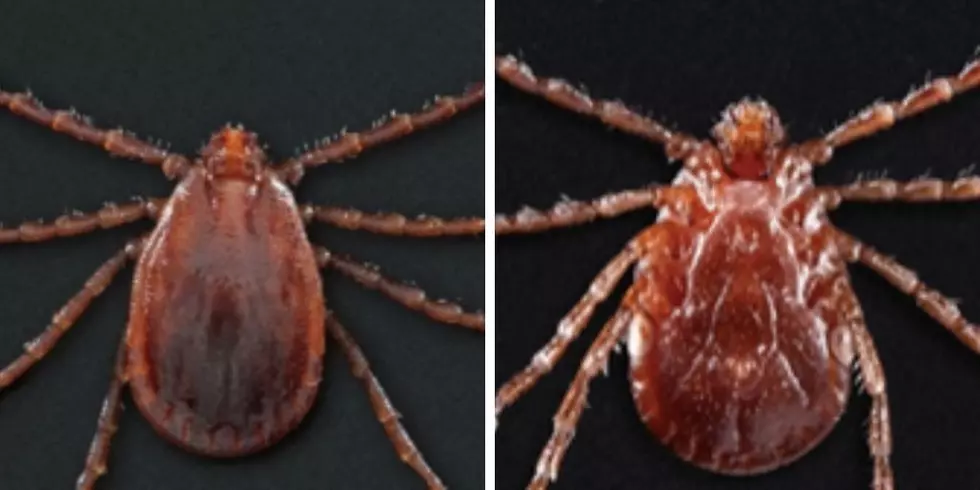
In Kentucky, Here’s How to Learn If a Tick You Found Carries Disease
This is difficult to write, but only because the mere thought of ticks gives me the willies; I was cringing during the entire first part of that sentence, and it continues.
But I'm here to help, so I will get over it.
We're heading into summertime and ticks will be serious business; good grief, a non-existent one scared my grandmother to death when I was a child. We were eating dinner, and they'd been talking about ticks (what a fun dinner topic) when I shouted, "I got one." It was a piece of lint; I had no idea what a tick looked like. My grandmother was not pleased.
SKIP THE GUESSING GAME AND SAVE THOSE TICKS
But listen, you don't need to worry about sending LINT in to have it tested. You can, however, send in your ticks. That's right. If you discover a tick on your person or on another person's person or on your pet, try not to panic so much that you immediately flush it. If you are so inclined, you DO have available resources for identifying that horrific little arachnid and learning if it carries disease.
I know plenty of people with Alpha Gal who would love this information. And, of course, you don't mess around with Lyme Disease or Rocky Mountain Spotted Fever. Actually, it's a never a bad idea to learn as much as possible about ticks.
FINDING OUT IF A TICK IS A DISEASE CARRIER
So yeah, if you discover a tick, carefully remove the heinous little beast with tweezers, place it in alcohol--maybe in an alcohol-soaked cotton ball (just a suggestion)--then seal it up in a something like a Ziploc bag, and mail it to the University of Kentucky's entomology department. These are the instructions of department head Professor Reddy Palli.
Here also is some helpful information from Johns Hopkins University.
To find out the exact address you'll need, contact your local University of Kentucky extension office. In Daviess County, it's located inside the main campus of Owensboro Community and Technical College on New Hartford Road. The phone number is 270-685-8480.
In the meantime, it's good to learn how to protect yourself from ticks and what their bites look like.

WHAT HAPPENS AFTER YOU SEND IN YOUR TICK
Professor Palli says the individual who mails the specimen will be contacted if a pathogen of any kind is detected. You'd then be given instructions regarding what to do next.
Summertime is great, but it ain't all swimming pools, cardinals, and backyard cookouts. Ticks are serious business, and we should get just a serious when we find them.


